Pothos plants (Epipremnum aureum), also known as Devil’s Ivy, are some of the easiest and most forgiving houseplants you can grow. Beloved for their beautiful, trailing vines and heart-shaped, variegated leaves, pothos plants add a vibrant, tropical feel to any indoor space. Part of their popularity comes from their adaptability — they thrive in various light conditions and are relatively low-maintenance when it comes to care.
However, like all houseplants, proper watering is crucial to keeping your pothos lush, healthy, and growing vigorously. One of the most common and important questions for new and experienced plant owners alike is:
How often should you water a pothos?
In this comprehensive guide, we’ll explore the ideal watering frequency for pothos plants, factors that influence how much and how often to water, signs of underwatering and overwatering, proper watering techniques, and expert care tips to keep your pothos thriving year-round.
Introduction to Pothos Plants
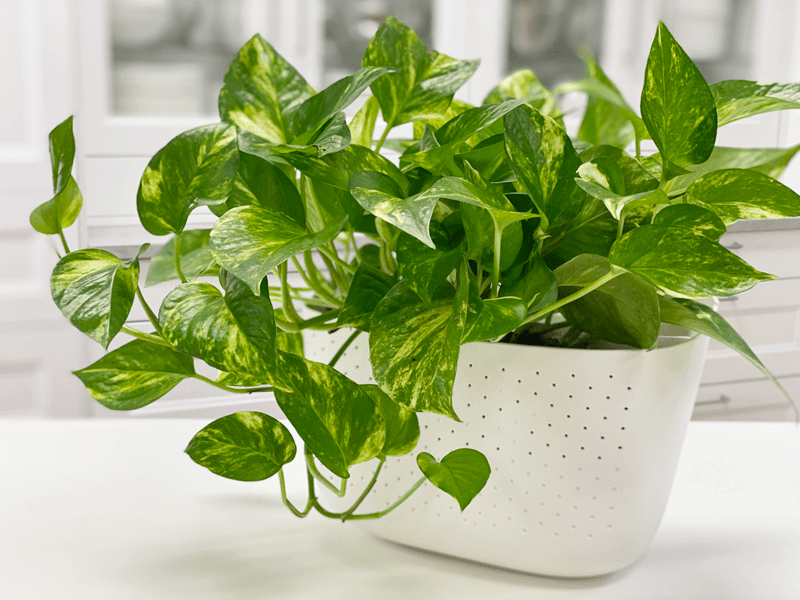
Native to the tropical forests of Southeast Asia and the Solomon Islands, pothos are climbing, evergreen perennials that naturally trail along the forest floor or climb up tree trunks. Known for their resilience, pothos can survive in a wide range of indoor environments and are especially tolerant of occasional neglect — making them perfect for both beginner and seasoned plant lovers.
There are many popular varieties of pothos, including:
- Golden Pothos
- Marble Queen
- Neon Pothos
- Jade Pothos
- Manjula Pothos
Though they may differ in appearance, their watering requirements are very similar.
How Often Should You Water a Pothos?
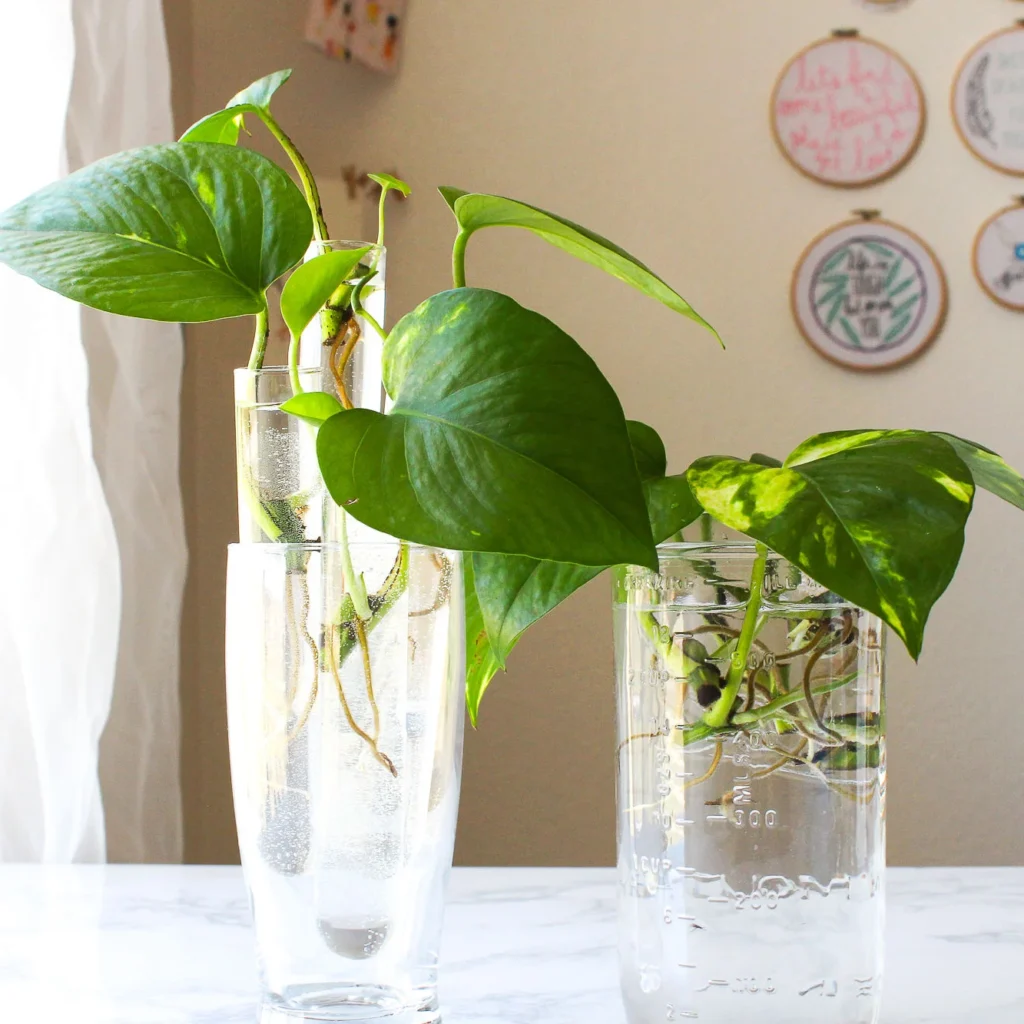
On average, you should water a pothos every 7–10 days during its growing season (spring and summer) and every 10–14 days during its dormant season (fall and winter).
However, there’s no fixed schedule suitable for every pothos plant. The best practice is to water based on soil dryness — allowing the top 1–2 inches of soil to dry out before watering again.
General Watering Rule:
- Spring & Summer (active growth): Every 7–10 days
- Fall & Winter (dormancy): Every 10–14 days
Important: Rather than sticking to a rigid calendar, always check the soil moisture before watering.
Factors That Affect Pothos Watering Frequency
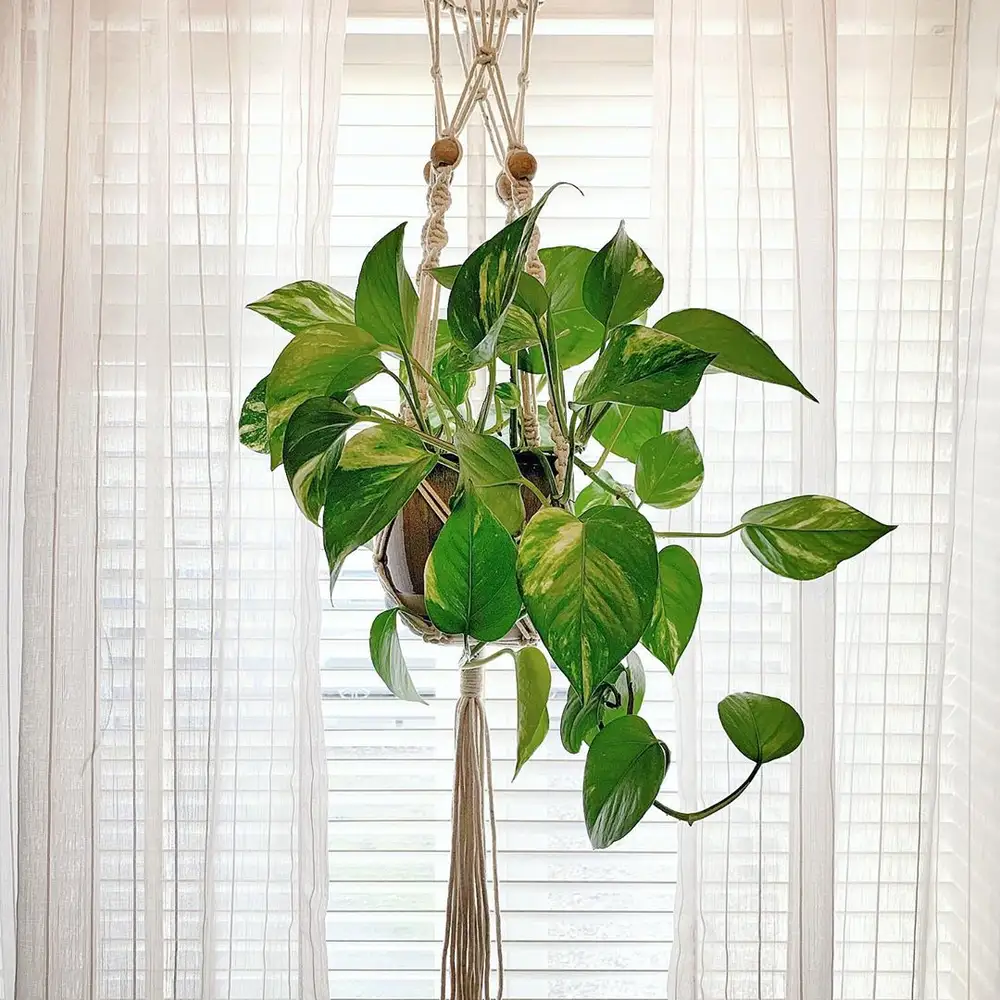
Several variables affect how often your pothos needs water. Being mindful of these factors will help you avoid common watering mistakes.
Season and Temperature
- Spring and Summer: Warmer temperatures and active growth increase water consumption.
- Fall and Winter: Growth slows, evaporation decreases, and less frequent watering is needed.
Indoor Climate and Humidity
Pothos prefer moderate humidity levels around 40–60%. In dry indoor air, especially during winter or with air conditioning, the soil will dry out faster, requiring more frequent watering.
Pot Size and Material
- Smaller pots dry out faster than larger containers.
- Terracotta pots wick moisture away more quickly than plastic or ceramic pots, affecting watering frequency.
Light Exposure
Pothos thrive in bright, indirect light but can tolerate low light conditions. Plants in brighter areas will need water more frequently, as light accelerates soil drying, while those in dimmer spots will need less frequent watering.
Soil Type
A well-draining, loose, and airy potting mix is ideal for pothos. Dense or compacted soil retains water longer, increasing the risk of overwatering.
Signs Your Pothos Needs Watering
Pothos plants provide clear signals when they need hydration. Look out for these signs:
Wilting or Drooping Leaves
When thirsty, pothos leaves may lose their firmness and droop.
Dry Soil
If the top 1–2 inches of soil feels dry to the touch, it’s time to water.
Crispy, Brown Leaf Tips
Prolonged dryness, low humidity, or underwatering can cause leaf edges and tips to turn brown and dry.
Slow or Stunted Growth
In the growing season, a pothos that isn’t getting enough water will slow its growth.
Signs of Overwatering a Pothos
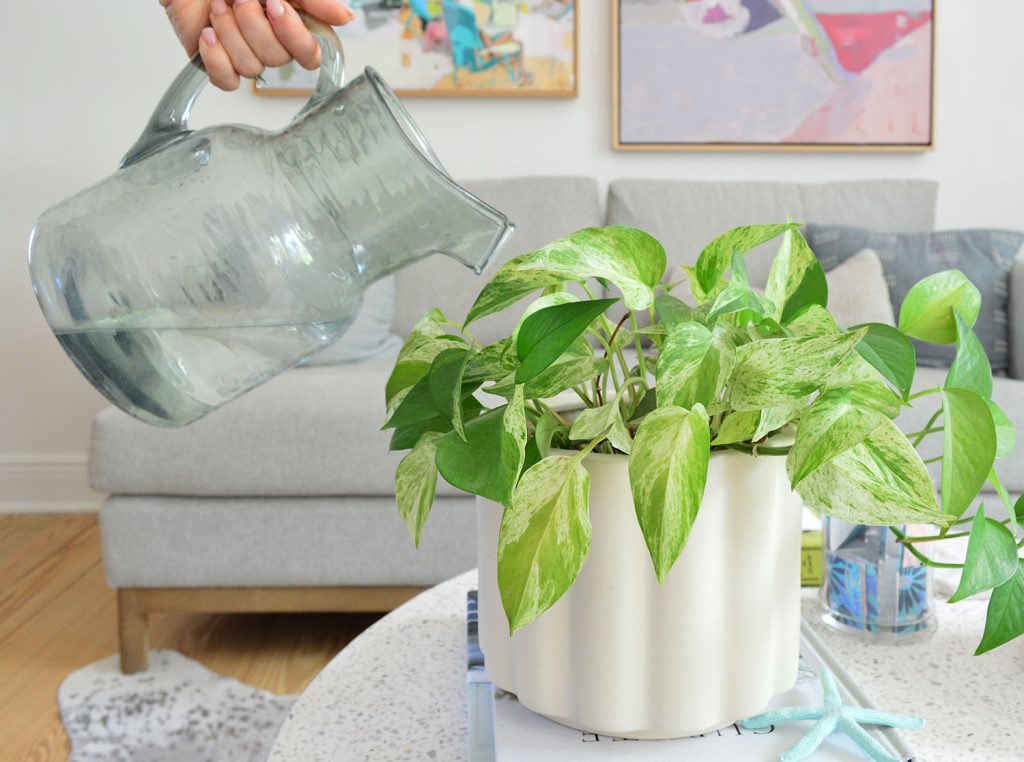
Overwatering is one of the most common and dangerous mistakes for pothos care. Watch for these signs:
Yellowing Leaves
If multiple leaves, especially older ones, turn yellow at once, it often signals overwatering.
Wilting Despite Moist Soil
Drooping leaves paired with wet or soggy soil is a classic symptom of root rot.
Soft, Mushy Stems
Soft, dark, or mushy stems at the soil line indicate root rot from excessive moisture.
Fungal Growth or Mold on Soil
Persistent wet soil can encourage fungal or mold growth on the surface.
How to Properly Water a Pothos
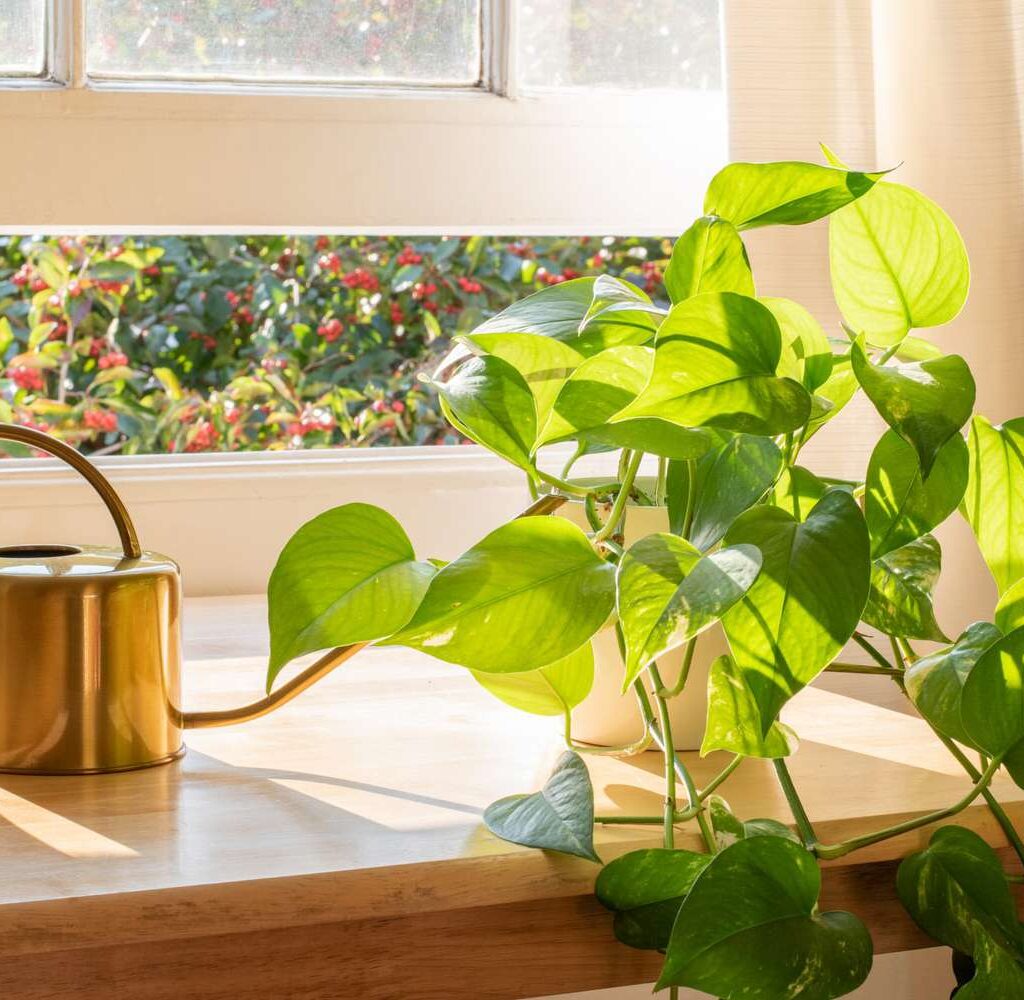
The technique you use to water your pothos is just as important as how often you do it. Follow these best practices:
Use the “Soak and Dry” Method
- Water the plant thoroughly until water drains from the bottom of the pot.
- Allow the top 1–2 inches of soil to dry out before the next watering.
Tip: Always discard any water that collects in the saucer beneath the pot to prevent root rot.
Use Room-Temperature Water
Cold water can shock pothos roots. Use lukewarm or room-temperature water for best results.
Check Soil Moisture Before Every Watering
Use your finger, a wooden stick, or a moisture meter to assess soil dryness before adding more water.
Seasonal Watering Adjustments for Pothos
Here’s a seasonal watering frequency guide to help you adjust your routine:
| Season | Watering Frequency | Notes |
|---|---|---|
| Spring/Summer | Every 7–10 days | Active growth and higher temperatures increase water needs. |
| Fall/Winter | Every 10–14 days | Slower growth and cooler temperatures reduce moisture demands. |
Always prioritize soil dryness over a calendar schedule.
Best Type of Water for Pothos Plants
Pothos plants are relatively tolerant but can be sensitive to chemicals in tap water, particularly chlorine and fluoride.
Ideal Water Choices:
- Filtered water
- Distilled water
- Rainwater
- Dechlorinated tap water (let tap water sit out for 24 hours)
This is especially helpful if you’ve noticed browning or yellowing tips on leaves.
Additional Pothos Plant Care Tips
While proper watering is vital, other care factors contribute to keeping your pothos healthy:
- Light: Bright, indirect light is ideal. Avoid direct sunlight, which can scorch leaves.
- Soil: Use a well-draining potting mix with perlite or coco coir for added aeration.
- Humidity: Maintain 40–60% humidity; mist leaves occasionally if the air is dry.
- Fertilizing: Feed with a balanced liquid fertilizer every 4–6 weeks during spring and summer.
- Pruning: Regularly trim leggy vines and yellowing leaves to encourage bushier growth.
- Repotting: Repot every 1–2 years or when roots outgrow the pot.
Why It’s Better to Underwater Than Overwater
Pothos are naturally resilient to occasional drought, storing water in their stems and leaves. They recover quickly from slight underwatering, but overwatering can lead to root rot — one of the most serious and often fatal issues for pothos plants.
When in doubt, it’s safer to wait an extra day or two before watering.
Conclusion
How often should you water a pothos?
The general rule is to water every 7–10 days during active growth seasons (spring and summer) and every 10–14 days during fall and winter. More importantly, always check the soil before watering and adjust your routine based on environmental factors like light, humidity, temperature, pot size, and soil type.
By practicing the soak-and-dry method, observing your plant’s condition, and providing proper care, your pothos will remain lush, vibrant, and an elegant addition to your home for years to come.

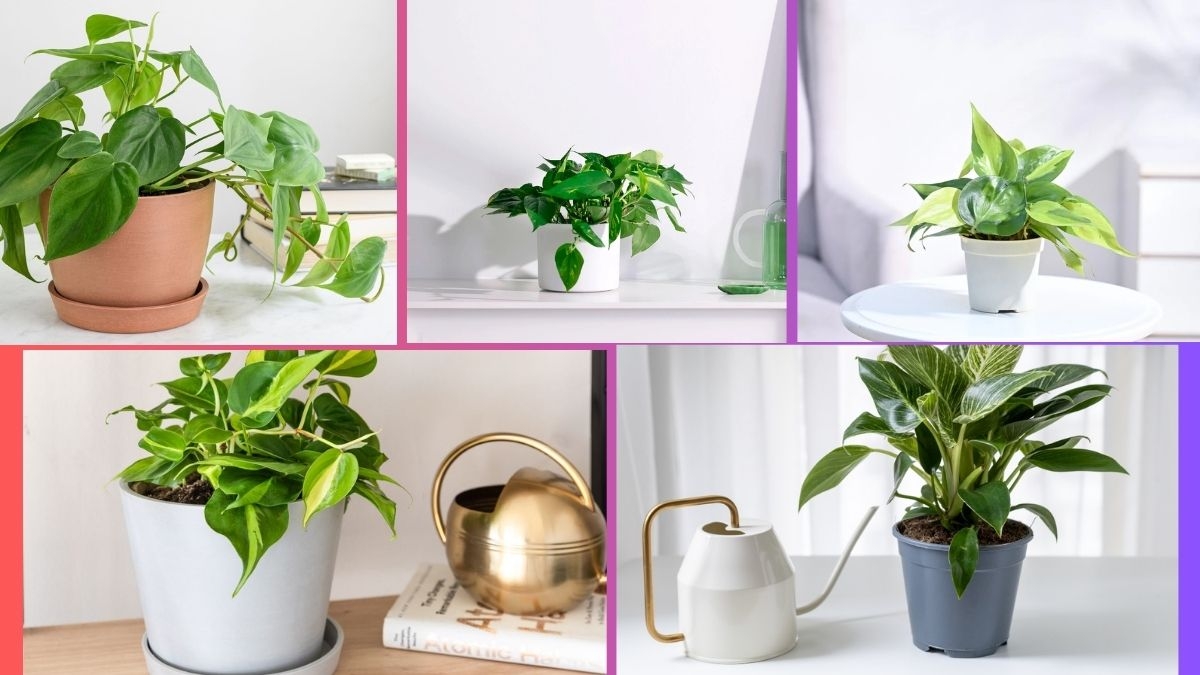




Leave A Comment